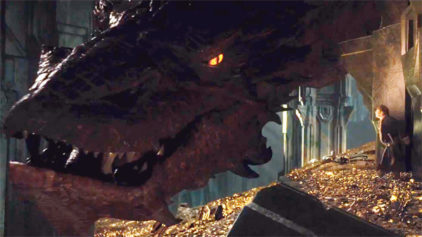Innovation doesn’t always breed success, and the production team behind The Hobbit: An Unexpected Journey is learning that the hard way. Director Peter Jackson’s fantasy epic utilizes new technology that displays visuals at 48 frames per second, twice the standard frame rate for movies over the last 80 years. Though the format is intended to provide enhanced visuals, social media users have expressed overwhelmingly negative opinions of the 48 frames per second approach.
The Hobbit is the first major studio film to be released in 48 frames per second, and a total of six different versions will be available in theaters, with the 2D, 3D, and 3D IMAX versions all offered in both 24 and 48 frame per second varieties. Early reviewers have compared the higher frame rate versions to high definition television shows, and have accused the format of making the special effects and scenery appear to be fake due to the sharpness.
“This wildly expensive visual technology paradoxically conspires to make everything else in the film look cheap,” said Slate’s Dana Stevens. “It’s hard to overstate the degree to which the 48fps format interfered with my ability to get lost in this movie’s story,”
According to research conducted by firm Fizziology for the LA Times, 60 percent of social media comments about the high frame rate version of was negative, with only 10 percent remaining positive, and the remainder falling in neutral territory. As it stands, only about 10 percent of US theaters are capable of screening the high frame rate version, meaning that the majority of viewers will likely see it at the standard rate in either 2D or 3D.
In May, Jackson responded to critics who had seen 10 minutes of early preview footage of The Hobbit in its 48 frame per second format in an interview with The Hollywood Reporter. He was steadfast in his support for the new technology, and its ability to capture large scale films like The Hobbit and the Oscar-winning The Lord of the Rings series.
“A lot of the critical response I was reading was people saying it’s different. Well, yes, it certainly is,” Jackson told reporter Carolyn Diardina. “But I think, ultimately, it is different in a positive way, especially for 3D, especially for epic films and films that are trying to immerse the viewer in the experience of a story.”

